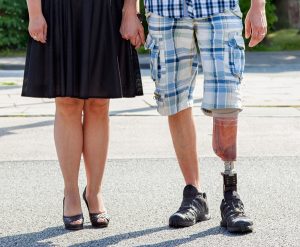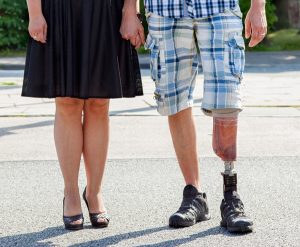 Phantom pain is pain that can be felt by those who have lost a limb. The pain feels like it is coming from that limb that is no longer there. Phantom pain is most often experienced in amputee patients, not those already born without limbs.
Phantom pain is pain that can be felt by those who have lost a limb. The pain feels like it is coming from that limb that is no longer there. Phantom pain is most often experienced in amputee patients, not those already born without limbs.
Not long ago, doctors theorized that post-amputation phantom pain was psychological. However, it has now been identified as a physical problem. Experts have observed neural activity in the brain during these phantom pain episodes originating from nerves in the spinal cord and other limbs.
For many patients, phantom pain is post-surgery phenomenon that improves with time. However, for others the pain does not go away. To manage that pain, one should always seek professional advice from their doctor to receive proper treatment, in the form of medication and/or therapy.
Here’s more on phantom pain and how to handle it.
Symptoms and Causes of Phantom Pain
The symptoms of phantom pain are exactly that: pain. Throbbing, stinging, burning, shooting sensations from limbs that are no longer there constitute phantom pain.
Researchers are still unclear as to the cause of phantom pain, but with the help of diagnostic imaging scans it has become apparent that the brain can receive mixed signals from the nerves. The nerve ends in the area of the missing limb may send signals to the brain which trigger pain even if it is mild discomfort or just a touch. Sometimes, the brain may even reroute the nerve signals.
For example, sensory nerves in other parts of the body like the face may trigger phantom pain from a missing right leg. So that when you touch that part of your face, your brain registers that sensation as leg pain. It truly is a fascinating phenomenon.
How to Fight Phantom Pain
Often, amputees feel the most pain in the remaining body part or the stump. This pain can be extremely challenging to live with. However, it does usually fade with time, and it can be both prevented and treated. Phantom pain and stump pain tend to occur in the lower limbs (toes, feet, legs), and they are usually sparked by changes in the weather, pressure from other objects on the remaining body parts, stress, and poorly-fitting prosthetics.
Therapy techniques like massages, electrical stimulation through EMGs (electromyography), stump socks and proper skin care, as well as prosthetic fittings, can all help. Treatment focuses on how changing the way the sensations are represented in the brain. Seeing a physical therapist is often advantageous as well. Exercises, manipulation, and training can be good for your limbs in general and especially to deal with the pain.
With the right medication and physical therapy, this pain can be treated. To help prevent stump and phantom pain in the first place, getting a custom-fit prosthetic is beneficial. The right professionals can make sure your prosthetic fits well, provides you with comfort and convenience, and adds to your everyday functionality while also making sure that your body is not experiencing pressure and discomfort from the limb.
Contact BioTech Limb and Brace Today
BioTech customizes prosthetics to ensure your functionality and comfort. Our goal is to create limbs that fit you perfectly and provide you with both comfort and convenience. Contact BioTech today and recognize your possibilities!
